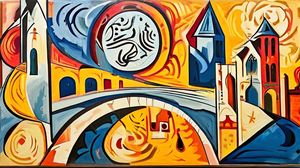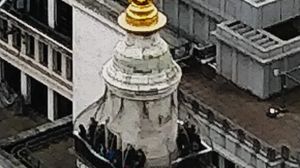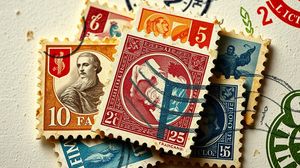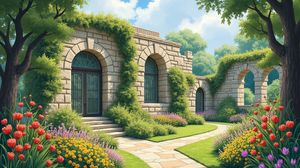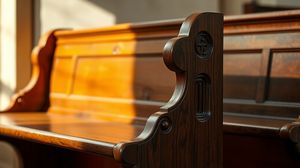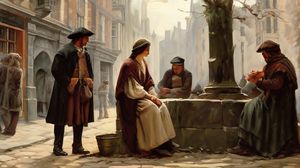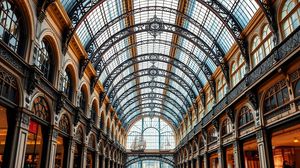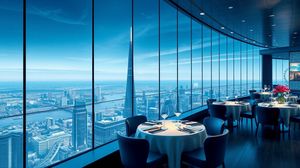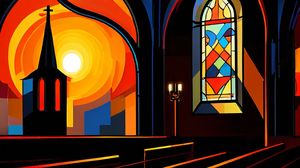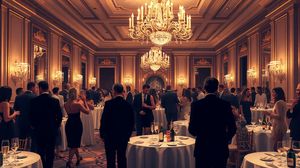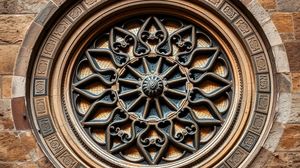
St. Magnus the Martyr is a historic and architecturally significant church situated in the City of London. The church is named after St. Magnus, Earl of Orkney, a figure canonized as a martyr in the early 12th century. Positioned near the northern end of London Bridge, it serves not only as a place of worship but also as a testament to the city's rich ecclesiastical history.
The current structure of St. Magnus the Martyr was designed by the iconic architect Sir Christopher Wren after the Great Fire of London in 1666. As such, it showcases Wren's signature architectural style, which often incorporated classical motifs with innovative designs that stood the test of time. The church's distinctive baroque interior features a grand wooden reredos and intricate plasterwork, making it a visual marvel for visitors.
One of the most intriguing aspects of St. Magnus the Martyr is its collection of historical relics. Within the church, you'll find a unique model of the old London Bridge, offering a glimpse into the bridge's past and its significance to the city before it was dismantled in the 19th century. This model is a favorite among history buffs and provides context to the church's geographical significance.
The church is also home to a magnificent 18th-century organ, celebrated for its tonal quality and craftsmanship. The organ has been skillfully restored and continues to be used for both regular services and special concerts, attracting musicians and music enthusiasts alike.
St. Magnus the Martyr is notable for its peal of twelve bells, with some of the largest and heaviest in the City of London. These bells are part of a tradition of bell-ringing that dates back centuries, contributing to the vibrant soundscape of the city's ecclesiastical heritage.
The churchyard of St. Magnus the Martyr is a quiet, reflective space that offers visitors a respite from the bustling city. It's also the final resting place of several notable individuals, each contributing to the rich tapestry of stories and histories associated with this remarkable church.

Making the Most of Your Visit:
Take a closer look at the model of the Old London Bridge inside the church. It's not just a tourist attraction; the details in the model tell the story of how London Bridge once burgeoned with shops and houses, a bustling hive of activity. Spend some time studying it to appreciate the historical transformation of this iconic landmark.
If you're a fan of architectural design, bring a set of binoculars or a zoom lens with you. It might sound unusual for a church visit, but some of the intricate plaster details and carvings in the baroque interior are best appreciated up close. This allows you to see the level of craftsmanship that went into Wren's design.
Make sure to visit when the organ is being played, if possible. The church hosts concerts and musical events where the 18th-century organ is featured, and its sound is nothing short of mesmerizing. Check their event schedule in advance to align your visit with a performance.
Spend a few moments in the churchyard, which provides a peaceful escape from the city's hustle and bustle. It's a great spot to contemplate the histories of those laid to rest here and to enjoy a bit of solitude in an otherwise busy area.
Finally, look out for the plaques and memorials in and around the church. They offer insights into notable figures and moments linked to the church's history, making the visit both educational and inspiring for those interested in London's storied past.

Visiting Times & Costs:
St. Magnus the Martyr is open to the public and welcomes visitors to explore its historical and architectural significance. The church typically operates from Monday to Friday, 10:00 AM to 4:00 PM, and on Sunday for worship services. However, opening hours may vary, especially during religious holidays or special events, so it is advisable to check prior to visiting.
Entry to the church is free of charge, allowing visitors to appreciate its rich history, architecture, and exhibits without a fee. However, donations are appreciated to help with the upkeep of this historic building.
For accessibility, St. Magnus the Martyr makes efforts to accommodate all visitors, although the historic nature of the building means there may be some limitations. There is step-free access available to the main areas of the church, but it is recommended that visitors requiring assistance contact the church in advance to ensure a smooth visit.

Address & Map:

Nearby:
